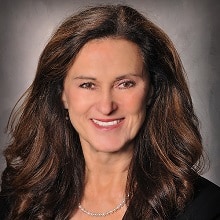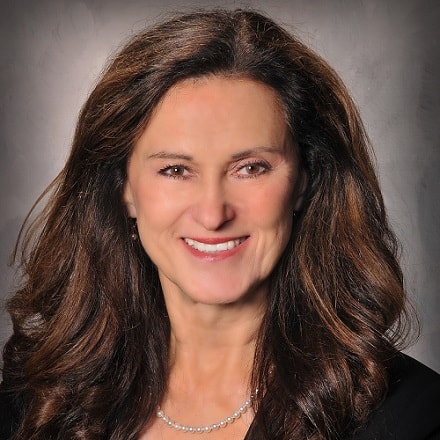Inside Angle
From 3M Health Information Systems
Remote patient monitoring in the time of COVID-19
I find myself worrying about the health of my family, friends and work colleagues in this time of COVID-19. We are social distancing and some states are in lockdown mode. Many of the people I care about are older, like my 92-year-old mother who lives alone independently. Others have chronic conditions that make them more vulnerable to this virus. If they get sick, it may not be in their or my best interest to see them. One solution that helps ease my worries is remote patient monitoring.
Previously, I was a chief medical officer (CMO) of a managed care organization with a team that used remote patient monitoring (RPM) for congestive heart failure patients; this helped our patients receive timely adjustments to their medications and helped prevent unnecessary hospitalization.
With COVID-19, the total number of positive cases, patients requiring hospitalization, ventilator assistance and death rates continue to rise. Some of the biggest concerns are the easy transmissibility of the virus, inadequate numbers of hospital beds, ventilators and personal protective equipment for front line providers.
Implementing RPM for COVID-19 patients has many potential positive benefits including:
- Decreasing the risk of virus transmission to other patients, community members and healthcare workers.
- Patients get quick care and timely hospital-based care, if needed.
- Providing qualitative measurements of patient’s health status to monitor disease. progression (WHO indicates onset of severe pneumonia in adolescents and adults is when the SpO2 is less than or equal to 93 percent).
- Helping ease the patient’s and their family and friends’ anxieties over disease progression when in quarantine.
- Patients recover without having to be hospitalized which helps with potential hospital bed shortage (CDC guidance states that most COVID-19 patients can recover at home).
- Allowing notification of hospital staff to prepare for COVID-19 patient’s arrival.
- Helping flatten the curve so that healthcare systems don’t get overwhelmed.
Various healthcare systems have set up 24-hour hotlines to educate and screen patients to prevent patients with mild symptoms from coming in person to urgent care clinics and emergency departments. Instead, if criteria are met, COVID-19 testing is arranged and a video or telephone visit is scheduled with a provider, or the patient is scheduled to be seen at the hospital, depending on the presentation. A few healthcare systems providing remote patient monitoring programs include University of Iowa Healthcare (UIHC) in Iowa City, IA and OSF Healthcare in Illinois. Once a patient tests positive for COVID-19 at UIHC, they are entered into the monitoring program and a kit including a blood pressure machine and pulse oximeter (unable to buy thermometers or they would have been included) is delivered to their home. The patient takes and logs their vital signs and symptoms and they have a video or telephone visit with a physician or an advanced practice provider daily while symptomatic. If their symptoms worsen, care is provided as needed or they are sent to the hospital when appropriate. The UIHC program requires patients to take their own vital signs which is working well so far.
There are also digital options for monitoring patients’ vital signs. Last month, the FDA issued a new policy that now allows certain non-invasive vital-sign measuring device manufacturers to expand their use for monitoring patients with COVID-19 or co-existing conditions (hypertension, heart failure) in the home setting. Previously these devices were only approved for use in hospitals or other healthcare facilities. Devices included in the policy are electronic thermometer, ECG, cardiac monitor, pulse oximetry, non-invasive blood pressure, respiratory rate/breathing frequency and electronic stethoscope.
For many healthcare systems, the financial impact of COVID-19 is astronomical due to deferred non-essential surgeries and in person clinic visits. Medicare and Medicaid RPM coverage used to be limited to patients with one or more chronic conditions, but since the emergence of COVID-19, CMS has expanded coverage. On March 30, 2020, CMS released “Medicare and Medicaid Programs; Policy and Regulatory Revisions in Response to the COVID-19 Public Health Emergency” interim final rule to last through the national public health emergency, which also includes permanent fixes. Beginning on March 1, 2020, the final rule includes coverage for both acute and/or chronic conditions, new and established patients and consent obtained once annually.
CPT codes for the provision of RPM include:
- CPT Code 99453: Remote monitoring of physiologic parameter(s) (e.g., weight, blood pressure, pulse oximetry, respiratory flow rate), initial; set-up and patient education on use of equipment. (Initial set-up and patient education of monitoring equipment)
- CPT Code 99454: Device(s) supply with daily recording(s) or programmed alert(s) transmission, each 30 days. (Initial collection, transmission, and report/summary services to the clinician managing the patient)
- CPT Code 99457: Remote physiologic monitoring treatment management services, clinical staff/physician/other qualified health care professional time in a calendar month requiring interactive communication with the patient/caregiver during the month; first 20 minutes
- CPT Code 99458: Each additional 20 minutes (List separately in addition to code for primary procedure)
- CPT Code 99091: Collection and interpretation of physiologic data (e.g., ECG, blood pressure, glucose monitoring) digitally stored and/or transmitted by the patient and/or caregiver to the physician or other qualified health care professional, qualified by education, training, licensure/ regulation (when applicable) requiring a minimum of 30 minutes of time, each 30 days
There has also been recent expansion of coverage for telehealth and telephone visits which has been useful especially for programs like the one at UIHC.
Expansion of and payment for remote patient monitoring programs and devices will ensure we can appropriately intervene at the right time for patients while providing the social distance necessary to reduce the spread of the virus. It will be interesting to see how these changes impact healthcare delivery in the future.
Victoria Sharp, MD, MBA, is a Clinical Transformation Physician Consultant with 3M Health Information Systems.
Watch our COVID-19 payer webinar on demand.
During a pandemic, healthcare information is gathered, studied, and published rapidly by scientists, epidemiologists and public health experts without the usual processes of review. Our understanding is rapidly evolving and what we understand today will change over time. Definitive studies will be published long after the fact. 3M Inside Angle bloggers share our thoughts and expertise based on currently available information.


